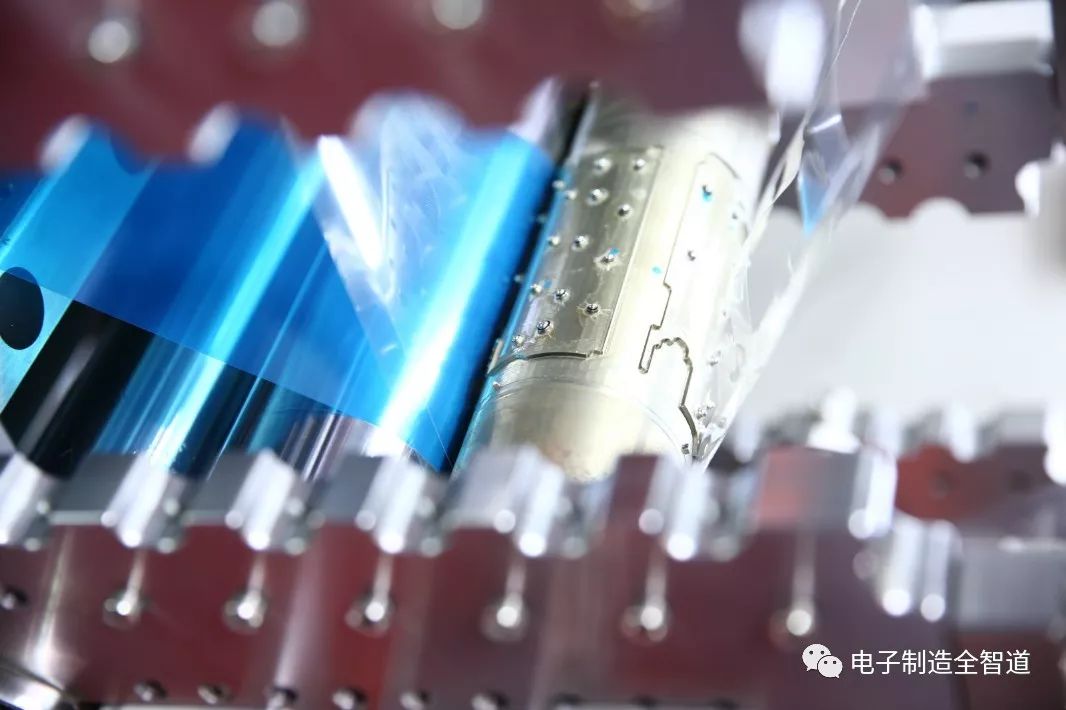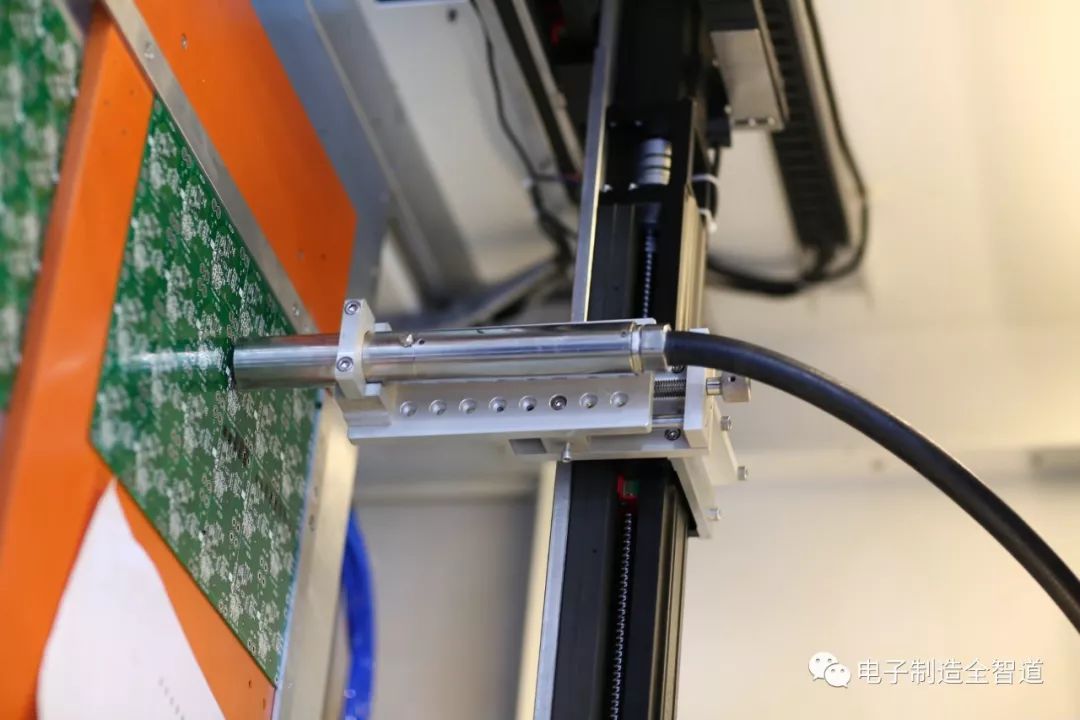Common quality problems and improvement measures in PCB solder mask process
Question: White spots appear on the printed surface.
Reason 1: White spots are caused by improper diluent mixing.
Improvement Measures: Always use the company-approved thinner to ensure compatibility with the ink. This helps prevent issues like white spots and ensures better adhesion and uniformity.
Reason 2: The sealing tape is dissolved during printing.
Improvement Measures: Use white paper instead of the original sealing tape to avoid chemical reactions that may damage the screen or cause uneven print results.
Question: Sticky film after printing.
Reason 1: Ink was not fully baked or dried.
Improvement Measures: Check the drying process carefully. Ensure the oven temperature and time are sufficient for the ink to cure completely.
Reason 2: Excessive vacuum pressure during printing.
Improvement Measures: Adjust the vacuum system to avoid overpressure, which can lead to ink distortion or poor adhesion. Make sure there are no gas guides interfering with the process.
Problem: Poor exposure quality.
Reason 1: Insufficient vacuum during exposure.
Improvement Measures: Check the vacuum system to ensure it's functioning properly. A good vacuum is essential for accurate exposure and clear image transfer.
Reason 2: Exposure energy is not suitable for the ink type.
Improvement Measures: Adjust the exposure time and intensity according to the manufacturer’s guidelines to achieve optimal results.
Reason 3: Exposure machine temperature is too high.
Improvement Measures: Monitor and maintain the exposure machine temperature below 26°C to avoid overheating, which can affect the quality of the exposure.
Problem: Ink does not dry properly.
Reason 1: Oven ventilation is inadequate.
Improvement Measures: Ensure the oven has proper air circulation and check the ventilation system regularly to promote even drying.
Reason 2: Oven temperature is too low.
Improvement Measures: Confirm that the actual oven temperature matches the required standard for the specific ink used. Adjust as needed.
Reason 3: Not enough diluent added.
Improvement Measures: Increase the amount of diluent and mix thoroughly to ensure even distribution and proper drying.
Reason 4: Slow-drying diluent is used.
Improvement Measures: Use the recommended company-approved thinner to improve drying speed and reduce the risk of sticking or smudging.
Reason 5: Ink is too thick.
Improvement Measures: Adjust the ink viscosity to the appropriate level before printing to ensure smooth application and better drying performance.

Problem: Development is not clean.
Reason 1: Long waiting time between printing and development.
Improvement Measures: Keep the placement time within 24 hours to prevent the ink from setting and causing cleaning issues during development.
Reason 2: Ink is removed before development.
Improvement Measures: Work in a darkroom and cover fluorescent lights with yellow paper to prevent premature exposure of the photoresist.
Reason 3: Insufficient developer solution.
Improvement Measures: Check both the concentration and temperature of the developer solution to ensure it's adequate for proper development.
Reason 4: Development time is too short.
Improvement Measures: Extend the development time to allow full removal of unexposed areas without damaging the exposed image.
Reason 5: Overexposure causes excessive hardening.
Improvement Measures: Adjust the exposure energy to match the requirements of the ink and substrate.
Reason 6: Over-baking leads to ink degradation.
Improvement Measures: Optimize baking parameters to avoid over-curing, which can cause cracking or peeling of the ink layer.
Reason 7: Ink is not evenly mixed.
Improvement Measures: Stir the ink thoroughly before printing to ensure consistent color and performance.
Reason 8: Incompatible diluent used.
Improvement Measures: Always use the company-recommended thinner to maintain ink stability and performance.
Problem: Overexposure (etching) occurs.
Reason 1: Developer solution is too concentrated and hot.
Improvement Measures: Reduce the concentration and temperature of the developer to prevent excessive etching and loss of fine details.
Reason 2: Too long development time.
Improvement Measures: Shorten the development time to prevent over-etching and maintain the integrity of the image.
Reason 3: Insufficient exposure energy.
Improvement Measures: Increase the exposure energy to ensure proper hardening of the photoresist.
Reason 4: High water pressure during development.
Improvement Measures: Lower the water pressure to avoid washing away the desired pattern.
Reason 5: Ink is not evenly mixed.
Improvement Measures: Mix the ink thoroughly before printing to ensure even coating and consistent exposure results.
Reason 6: Ink is not fully dried before development.
Improvement Measures: Follow the correct baking procedure and refer to the "Ink Does Not Dry" section for more details.
Problem: Green Oil Bridge Breaks (Open Circuit).
Reason 1: Insufficient exposure energy.
Improvement Measures: Increase the exposure energy to ensure complete hardening of the green oil layer.
Reason 2: Board processing is incomplete.
Improvement Measures: Review and improve the board preparation process to ensure proper adhesion and consistency.
Reason 3: High development and washing pressure.
Improvement Measures: Adjust the pressure during development and washing to avoid damage to the delicate patterns.
Problem: Sparkling on Tin Surface.
Reason 1: Overexposure causes surface oxidation.
Improvement Measures: Adjust development parameters to avoid over-etching and follow the guidance from the "Overexposure" section.
Reason 2: Poor pre-treatment of the board surface.
Improvement Measures: Clean the board thoroughly before printing to remove oils, dust, and contaminants that could interfere with adhesion.
Reason 3: Insufficient exposure energy.
Improvement Measures: Verify that the exposure energy meets the ink's requirements to ensure proper curing and a smooth finish.
Reason 4: Flux is not properly adjusted.
Improvement Measures: Calibrate and adjust the flux to ensure even distribution and better adhesion.
Reason 5: Post-baking is insufficient.
Improvement Measures: Check and improve the post-baking process to ensure full curing of the ink and stable performance.
Problem: Poor Tin Coating Quality.
Reason 1: Development is not clean.
Improvement Measures: Address multiple factors affecting development, such as solution concentration, temperature, and timing.
Reason 2: Contamination during post-baking.
Improvement Measures: Improve oven exhaust systems or clean the machine before use to prevent solvent contamination.
Problem: Post-Bake Oil Issues.
Reason 1: No segmented baking applied.
Improvement Measures: Implement segmented baking to ensure even heat distribution and better drying of the ink.
Reason 2: Plug hole ink viscosity is too low.
Improvement Measures: Adjust the viscosity of the plug hole ink to the recommended level for optimal performance.
Problem: Matte Appearance of Ink.
Reason 1: Diluent is incompatible with the ink.
Improvement Measures: Use the company-approved thinner to ensure proper mixing and a smooth finish.
Reason 2: Low exposure energy.
Improvement Measures: Increase the exposure energy to improve the ink's curing and gloss.
Reason 3: Overexposure causes dullness.
Improvement Measures: Adjust the development parameters to avoid over-etching and restore the ink's natural sheen.

Problem: Ink Discoloration.
Reason 1: Ink thickness is too thin.
Improvement Measures: Apply a thicker layer of ink to enhance coverage and reduce the chance of discoloration.
Reason 2: Substrate oxidation occurs during storage or handling.
Improvement Measures: Inspect and improve the pre-treatment process to prevent oxidation and ensure a clean, stable surface for printing.
Reason 3: Post-bake temperature is too high.
Improvement Measures: Monitor and control the post-bake temperature to avoid excessive heat that can cause ink discoloration.
Problem: Poor Ink Adhesion.
Cause 1: Ink model is not suitable for the application.
Improvements: Select an appropriate ink formulation that matches the material and process requirements.
Cause 2: Same issue as above — ink model is not suitable.
Improvements: Replace with the correct ink type to ensure strong adhesion and durability.
Cause 3: Incorrect drying conditions and poor airflow during baking.
Improvement Measures: Use the correct temperature and time settings, and increase air flow to promote faster and more even drying.
Cause 4: Improper additive dosage or incorrect type of additives used.
Improvements: Adjust the amount or switch to other compatible additives to enhance ink performance and adhesion.
Cause 5: High humidity levels during drying.
Improvement Measures: Improve the environment by reducing humidity to ensure proper drying and better adhesion.
Problem: Screen Blocking During Printing.
Cause 1: Ink dries too quickly on the screen.
Improvement Measures: Add a slow-drying agent to extend the working time of the ink and prevent clogging of the mesh.
Cause 2: Printing speed is too slow.
Improvement Measures: Increase the printing speed and reduce the amount of slow-drying agent to balance efficiency and quality.
Cause 3: Ink viscosity is too high.
Improvement Measures: Add a lubricant or extra slow-drying agent to reduce viscosity and improve ink flow through the screen.
Cause 4: Incompatible diluent used.
Improvements: Use the specified diluent to ensure proper mixing and prevent screen blocking issues.
Problem: Penetration and Blurring in Prints.
Cause 1: Ink viscosity is too low.
Improvement Measures: Increase the ink concentration without adding more thinner to improve definition and reduce bleeding.
Cause 2: Excessive pressure during squeegee operation.
Improvement Measures: Reduce the pressure applied to the squeegee to avoid ink penetration and improve print clarity.
Cause 3: Poor-quality squeegee blade.
Improvements: Replace the squeegee or adjust its angle to ensure even ink distribution and sharp image transfer.
Cause 4: Incorrect distance between the stencil and the board.
Improvement Measures: Adjust the spacing to ensure proper contact and even ink transfer without distortion.
Cause 5: Screen tension is reduced over time.
Improvements: Re-tension or replace the screen to maintain consistent printing quality and prevent misalignment.

Rain Test Chamber,Tightness Testing Test Box,Waterproof Rating Test Chamber,Environmental Test Chamber
Wuxi Juxingyao Trading Co., Ltd , https://www.juxingyao.com